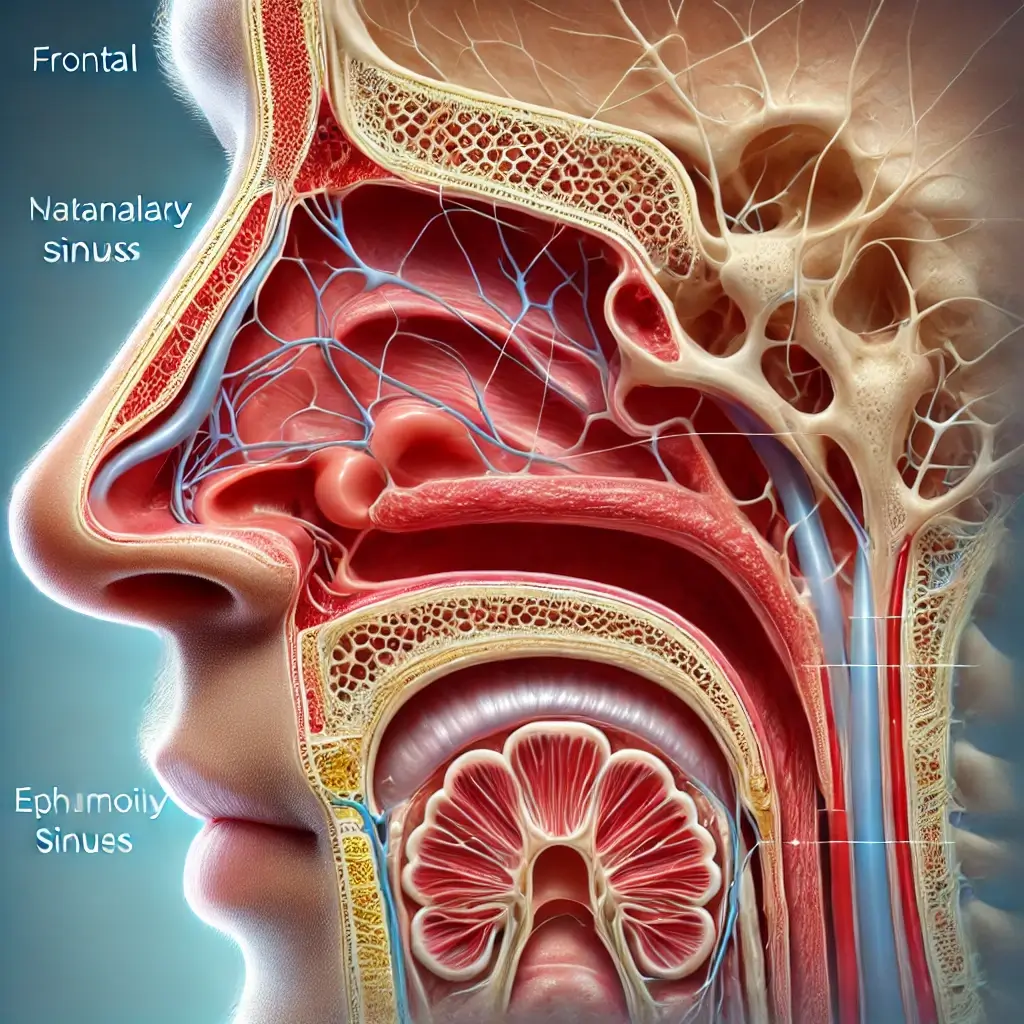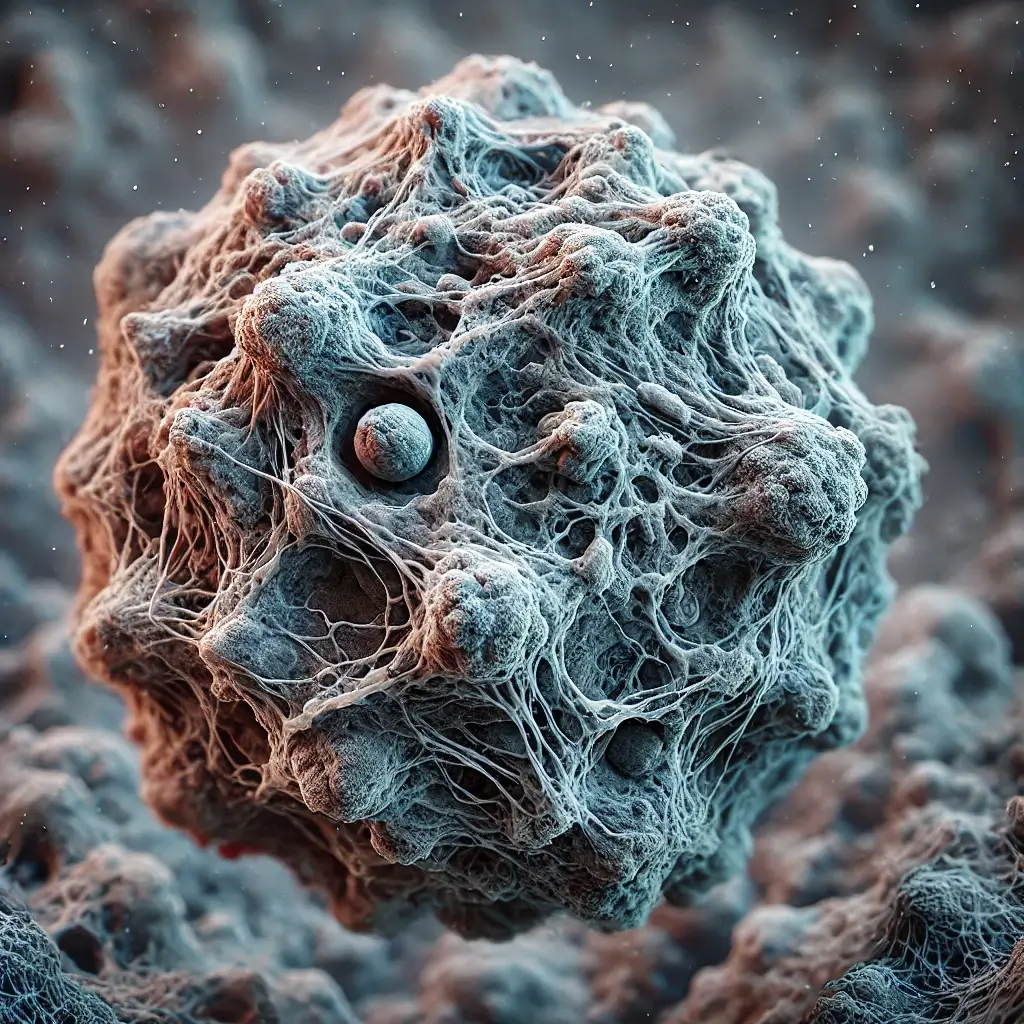Book Appointment Now
Understanding Nasal Cavity and Paranasal Sinus Cancer

Nasal Cavity and Paranasal Sinus Cancer Guide
Introduction
Nasal cavity and paranasal sinus cancer is a rare type of cancer that develops in the tissues of the nasal cavity (the hollow space behind the nose) or the paranasal sinuses (the air-filled spaces around the nose). These cancers are often challenging to detect early due to their subtle symptoms, which may resemble common sinus issues. With advancements in diagnosis and treatment, patients diagnosed early have better outcomes and improved quality of life.
Statistics
Nasal cavity and paranasal sinus cancer accounts for less than 1% of all cancers in the United States, with approximately 2,000 cases diagnosed annually. The five-year survival rate ranges from 60% for localized cancers to 35% for those that have spread to distant parts of the body. Squamous cell carcinoma is the most common type, though other types such as adenocarcinoma and melanoma can also occur in this region.
Medical Illustrations
Microscopic illustration of a hypopharyngeal cancer cell:

CT or MRI scan-style medical illustration showing a very small tumor in the NCPS:

Risk Factors and Prevention
a. Known Risk Factors
Understanding the risk factors for nasal cavity and paranasal sinus cancer is key to prevention:
- Tobacco Use: Smoking is a significant risk factor for this type of cancer.
- Occupational Hazards: Long-term exposure to wood dust, leather dust, nickel and formaldehyde increases risk.
- Human Papillomavirus (HPV): Certain strains of HPV have been associated with these cancers.
- Chronic Sinus Inflammation: Persistent inflammation or infection may contribute to risk.
- Genetic Predisposition: A family history of similar cancers can increase susceptibility.
- Air Pollution: Long-term exposure to air pollution has been linked to an elevated risk of developing nasal cancers.
b. Prevention
- Avoid tobacco products and limit exposure to secondhand smoke.
- Use protective equipment when working in industries with exposure to hazardous materials.
- Seek treatment for chronic sinus conditions or persistent nasal symptoms.
- Maintain a healthy lifestyle with a diet rich in fruits and vegetables to support immune health.
Screening
Symptoms and Early Warning Signs
Symptoms of nasal cavity and paranasal sinus cancer may overlap with common sinus or respiratory issues, delaying diagnosis. Common signs include:
- Persistent nasal congestion or blockage, especially on one side
- Nosebleeds (epistaxis)
- Lump or sore inside the nose or mouth that does not heal
- Facial pain, swelling, or numbness
- Vision changes or double vision
- Decreased sense of smell
- Loosening of teeth or dentures that no longer fit properly
- Persistent watery eyes
Seek medical evaluation if these symptoms persist for more than two weeks or worsen over time.
Diagnosis
Diagnosing nasal cavity and paranasal sinus cancer involves a combination of clinical evaluations and imaging studies:
- Physical Examination: Includes inspection of the nose, face and neck for abnormalities.
- Nasal Endoscopy: A thin, flexible tube with a camera is used to examine the nasal passages and sinuses.
- Imaging Tests: CT scans, MRI, and PET scans help visualize tumors and assess their extent.
- Biopsy: Tissue samples confirm the presence of cancerous cells.
- HPV Testing: Conducted for cancers suspected to have an HPV-related cause.
Stages
Types of Treatment
Overview of Treatment Modalities
Treatment for nasal cavity and paranasal sinus cancer depends on the tumor’s size, location and stage, as well as the patient’s overall health. Options include:
- Surgery:
- Endoscopic Surgery: Minimally invasive techniques to remove tumors through the nasal passages.
- Open Surgery: May be necessary for larger or more invasive tumors.
- Radiation Therapy: Often used post-surgery or as a primary treatment for inoperable tumors.
- Chemotherapy: Targets cancer cells throughout the body, commonly used for advanced stages.
- Targeted Therapy: Focuses on specific cancer growth pathways, such as EGFR inhibitors.
Immunotherapy: Boosts the immune system to fight advanced or recurrent cancers.
Comparing Treatments
| Treatment | Mechanism | Side Effects | Efficacy (Survival Rate) | Study/Trial |
|---|---|---|---|---|
| Surgery | Removes tumor | Pain, infection | 70% 5-year survival for localized cases | Smith et al., 2022 |
| Radiation Therapy | Shrinks or eliminates tumors | Fatigue, skin burns | 60% 5-year survival for early-stage cases | Lee et al., 2021 |
| Chemotherapy | Inhibits cell division | Nausea, hair loss | 40% 5-year survival for advanced cases | Carter et al., 2020 |
| Targeted Therapy | Blocks cancer growth pathways | Diarrhea, fatigue | 55% 5-year survival for specific mutations | Brown et al., 2023 |
| Immunotherapy | Enhances immune response | Rash, flu-like symptoms | 50% 5-year survival for advanced cancers | Green et al., 2023 |
Living with Nasal Cavity and Paranasal Sinus Cancer
Managing life with nasal cavity and paranasal sinus cancer requires addressing both physical and emotional needs. Suggestions include:
- Rehabilitation: Work with a physical therapist to regain strength and mobility after surgery.
- Nutritional Support: Consult a dietitian for advice on maintaining adequate nutrition, especially if treatments affect appetite or swallowing.
- Mental Health Care: Seek counseling or join support groups to manage emotional challenges.
- Speech Therapy: Beneficial for patients experiencing speech or swallowing difficulties.
- Regular Monitoring: Follow-up care is essential to detect recurrence and manage long-term side effects.
Additional Resources
Key Takeaways
- Nasal cavity and paranasal sinus cancer is rare, but serious, requiring early diagnosis for better outcomes.
- Symptoms like persistent nasal blockage, nosebleeds and facial pain should not be ignored.
- Treatment options include surgery, radiation, chemotherapy and advanced therapies like immunotherapy.
- Comprehensive care and support are vital for improving quality of life during and after treatment.
Final Recommendations
- Be vigilant about persistent nasal or sinus symptoms and seek prompt medical evaluation.
- Reduce risk factors by avoiding tobacco, limiting exposure to harmful substances and maintaining overall health.
- Engage with a specialized care team to explore all treatment options and manage side effects effectively.
Disclaimer
The information provided in this article is intended for general informational purposes only and should not be construed as medical advice. While every effort has been made to ensure the accuracy of the information presented, it is not a substitute for professional medical guidance, diagnosis, or treatment. Always consult a qualified healthcare provider with any questions you may have regarding a medical condition, including Nasal Cavity and Paranasal Sinus Cancer. Do not disregard or delay seeking professional medical advice based on information found in this article. The authors and publishers are not responsible for any consequences resulting from the use of the information provided.
